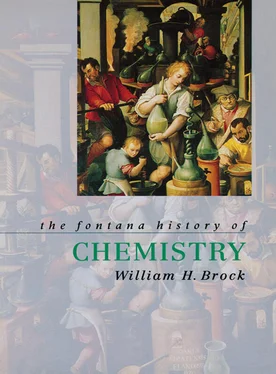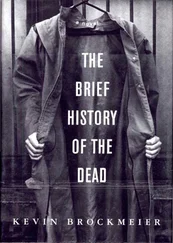TABLE 3.1 The contents of Fourcroy’s Système des connaissances chimiques (1800) arranged by classes of substances.
| Class |
Volume |
| 1. Undecomposed or simple bodies |
1 |
| 2. Burned bodies; oxides or acids |
2 |
| 3. Salifiable bases; earths and alkalis |
2 |
| 4. Salts |
3, 4 |
| 5. Metals and metal salts containing an excess of acid (although belonging to class 1, these were dealt with separately because of their number and importance) |
5, 6 |
| 6. Minerals |
6 |
| 7. Vegetable compounds |
7, 8 |
| 8. Animal compounds |
9, 10 |
Swede, Karl Linnaeus, chemical language remained crude and confusing. In 1782 Guyton made a series of proposals for the systematization of chemical language.
Alchemical and chemical texts written before the end of the eighteenth century can be difficult to read because of the absence of any common chemical language. Greek, Hebrew, Arabic and Latin words are found, there was widespread use of analogy in naming chemicals or in referring to chemical processes, and the same substance might receive a different name according to the place from which it was derived (for example, Aquila coelestis for ammonia; ‘father and mother’ for sulphur and mercury; ‘gestation’ as a metaphor for reaction; ‘butter of antimony’ for deliquescent antimony chloride; and ‘Spanish green’ for copper acetate). Names might also be based upon smell, taste, consistency, crystalline form, colour, properties or uses. Although several of these names have lingered on as ‘trivial’ names (which have even had to be reintroduced in organic chemistry in the twentieth century because systematic names are too long to speak), Lavoisier and his colleagues in 1797 decided to systematize nomenclature by basing it solely upon what was known of a substance’s composition. Since the theory of composition chosen was the oxygen system, Lavoisier’s suggestions were initially resisted by phlogistonists; adoption of the new nomenclature involved a commitment to the new chemistry.
Following the inspiration of Linnaeus, Guyton suggested in 1782 that chemical language should be based upon three principles: substances should have one fixed name; names ought to reflect composition when known (and if unknown, they should be non-committal); and names should generally be chosen from Greek and Latin roots and be euphonious with the French language. In 1787, Guyton, together with Lavoisier, Berthollet and Fourcroy, published the 300-page Méthode de nomenclature chimique , which appeared in English and German translations a year later. One-third of this book consisted of a dictionary, which enabled the reader to identify the new name of a substance from its older one. For example, ‘oil of vitriol’ became ‘sulphuric acid’ and its salts ‘sulphates’ instead of ‘vitriols’; ‘flowers of zinc’ became ‘zinc oxide’.
Perhaps the most significant assumption in the nomenclature was that substances that could not be decomposed were simple (i.e. elements), and that their names should form the basis of the entire nomenclature. Thus the elements oxygen and sulphur would combine to form either sulphurous or sulphuric acids depending on the quantity of oxygen combined. These acids when combined with metallic oxides would form the two groups of salts, sulphites and sulphates. In the case of what later became called hydrochloric acid, Lavoisier assumed that he was dealing with an oxide of an unknown element, murium. Because of some confusion over the differences between hypochlorous and hydrochloric acids, in Lavoisier’s nomenclature hydrochloric acid became muriatic acid and the future chlorine was ‘oxygenated muriatic acid’. The issue of whether the latter contained oxygen at all was to be the subject of fierce debate between Davy, Gay-Lussac and Berzelius during the three decades following Lavoisier’s death.
The French system also included suggestions by Hassenfratz and Adet for ways in which chemicals could be symbolized by geometrical patterns: elements were straight lines at various inclinations, metals were circles, alkalis were triangles. However, such symbols were inconvenient for printers and never became widely established; a more convenient system was to be devised by Berzelius a quarter of a century later.
During the eighteenth century some chemists had turned their minds to quantification and the possible role of mathematics in chemistry. On the whole, most chemists agreed with Macquer that chemistry was insufficiently advanced to be treated mathematically. Although he believed, correctly as it turned out, that the weight of bodies bore some relationship to chemical properties and reactions, the emphasis on affinity suggested that the project was hopeless. Nevertheless, Lavoisier, inspired by the writings of the philosopher, Condillac, believed fervently that algebra was the language to which scientific statements should aspire 7 :
We think only through the medium of words. Languages are true analytical methods. Algebra, which is adapted to its purpose in every species of expression, in the most simple, most exact, and best manner possible, is at the same time a language and an analytical method. The art of reasoning is nothing more than a language well arranged.
In a paper on the composition of water published in 1785, Lavoisier stressed that his work was based upon repeated measuring and weighing experiments ‘without which neither physics nor chemistry can any longer admit anything whatever’. Again, in another essay analysing the way metals dissolve in acids, Lavoisier used the Hassenfratz – Adet symbols:
In order to show at a glance the results of what happens in the solution of metals, I have constituted formulae of a kind that could at first be taken for algebraic formulae, but which do not have the same object and which do not derive from the same principles; we are still very far from being able to obtain mathematical precision in chemistry and therefore I beg you to consider the formulae that I am going to give you only as simple annotations, the object of which is to ease the workings of the mind.
The important point here was that Lavoisier used symbols to denote both constitution and quantity. Although he did not use an equals sign, he had effectively hit upon the idea of a chemical equation. As we shall see, once Berzelius’ symbols became firmly established in the 1830s, chemists began almost immediately to use equations to represent chemical reactions.
While producing the Méthode de nomenclature chimique with Lavoisier and the others, Guyton was converted to the new chemistry. Because the new language was also the vehicle of anti-phlogiston chemistry, it aroused much opposition. Nevertheless, through translation, it rapidly became and still remains the international language of chemistry.
TABLE 3.2 Lavoisier’s ‘elements’ or ‘simple substances’.
Lavoisier’s final piece of propaganda for the new chemistry was a textbook published in 1789 called Traité élémentaire de chimie (An Elementary Treatise on Chemistry). Together with Fourcroy’s larger text (published in 1801), this became a model for chemical instruction for several decades. In it Lavoisier defined the chemical element pragmatically and operationally as any substance that could not be analysed by chemical means. Such a definition was already a commonplace in mineralogical chemistry and metallurgy, where the analytical definition of simple substances had become the basis of mineralogical classification in the hands of J. H. Pott, A. F. Cronstedt and T. Bergman. It was for this reason that Lavoisier’s list of 33 basic substances bore some resemblance to the headings of the columns in traditional affinity tables. Lavoisier’s list included substances such as barytes, magnesia and silica, which later proved to be compound bodies.
Читать дальше












